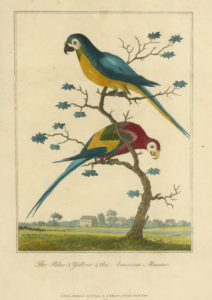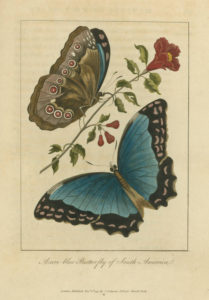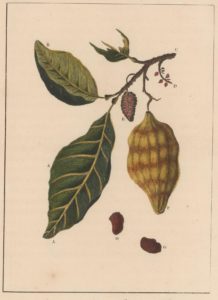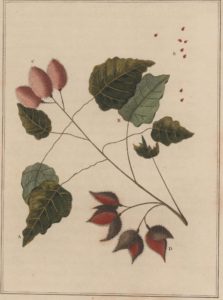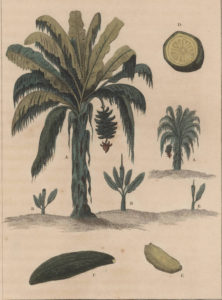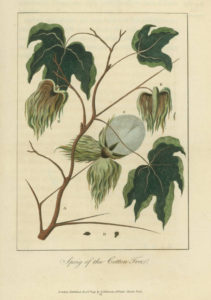Key Text: Narrative of a Five Years Expedition
Flora
John Gabriel Stedman's Narrative of a Five Years Expedition Against the Revolted Negroes of Surinam first published in 1796 in London, is better known for its chronicle of Stedman's impassioned proslavery stance and his relationship with the young and enslaved Johanna. Although Stedman was originally sent to the Caribbean by the Dutch military to collect escaped enslaved people (maroons), he also spent quite a bit of time taking extensive notes on the natural history of the island. This includes these images, created by well-known Romantic poet William Blake, that offer detailed depictions of a number of different species that occupied different habitats within the island. This includes sharks and remora fish, quato and saccawinkee monkeys, and a number of birds including the toucan, flycatcher, and the Amazon and Blue & Yellow macaws. Stedman's narrative can be found in volumes one and two in our archive.
Fauna
John Gabriel Stedman's Narrative of a Five Years Expedition Against the Revolted Negroes of Surinam first published in 1796 in London, is better known for its chronicle of Stedman's impassioned proslavery stance and his still contested relationship with Johanna, a young, previously enslaved girl, who became his "companion" during his time in the Caribbean. Stedman was originally sent to the island in 1773 by the Dutch military to capture escaped enslaved people (maroons), but his account often veers from his military aims into his personal life as well as the natural history of the island. His interest in natural history prompted him to seek an illustrator for his published book, and he found one in William Blake. Blake's images, shown here, provide detailed engravings of sprigs of common trees, the life stages of the sugar cane and other plants, the different components of the plantain and other trees, and images meant for comparison with similar looking trees.
Stedman's Narrative is a complicated text. While many of his views on cruelties of slavery, plantation life, and portraits of the African, Creole, and Indigenous people suggest that Stedman's views were humanitarian (his work was cited by many abolitionist groups) there are a number of inconsistencies between this text and his diaries, which seem to suggest a different, private view. Namely, he recognized the brutality with which the enslaved people were treated and offered his sympathies; however, he also believed that slavery was ultimately a positive thing, as it allowed for the inexpensive increase in production. This sentiment is not unique to Stedman, while many colonist writers expressed regret over slavery, they justified it taking place because of the values of what was produced.
Narrative is also notable for its portraits of the natural history, which includes the indigenous people, where he acknowledges the contrasts between the beauty and pleasure of land and its flora, while remarking the people as violent and cruel. While he sets out to highlight the differences in order suggest a superiority of the white Europeans, he inadvertently shows his own navieté; the indigenous peoples were likely no more cruel than the colonists, and further, the 'exotic' is never inherent, but rather subject to the individual.
Stedman's narrative can be found in volumes one and two in our archive.


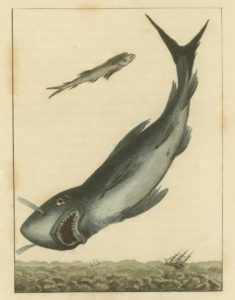
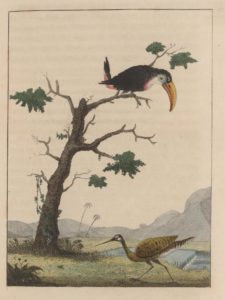
![The Green Butteryfly of South America [Top] and The Rattle Snake & Dypsas of Guiana.](https://ecda.northeastern.edu/wp-content/uploads/2018/01/Butterfly_Snake_Stedman-230x300.jpg)
